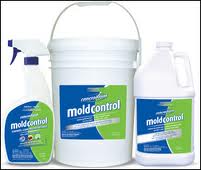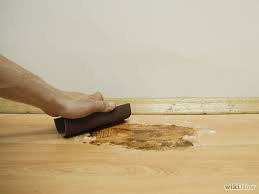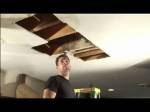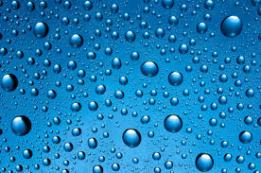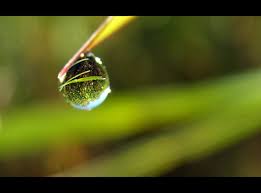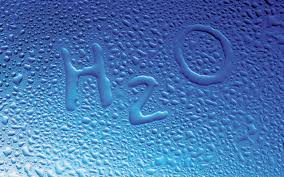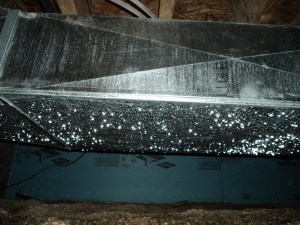How to kill house mold:

Start
by identifying the full extent of mold growth in the affected area at
your place and this could be easy or difficult depending on your
situation.
There is no home that is immune to mold growth, and not all mold is dangerous, how can you tell for sure? That`s what this article is all about, in this article we will go through the 7 key steps to safely and effectively to deal with mold growth whenever it appears in your place.
1. Assess the situation:

Start
by identifying the full extent of mold growth in the affected area at
your place and this could be easy or difficult depending on your
situation.
Start by identifying the full extent of mold growth in the affected area at your place and this could be easy or difficult depending on your situation. As a homeowner you can deal with the moldy areas less than the size of about a sheet of plywood or so but larger patches or moldy areas that involve some kind of sewage backup are best left to the pros.
2. Eliminate the moisture source.
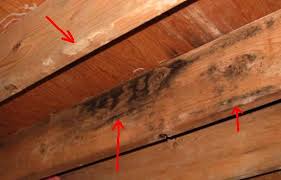
Start
by identifying the full extent of mold growth in the affected area at
your place and this could be easy or difficult depending on your
situation.
Mold only grows in the presence of moisture, that`s why you need to make the area permanently dry before you can expect permanent freedom from mold. Basements are a good place for mold to grow
But ventilation is not always the answer. Only ventilate basements when outdoor areas are cooler than the air inside your basement. Basement ventilation during a hot humid weather only actually encourages mold growth.
3. Make removal decisions.

Start
by identifying the full extent of mold growth in the affected area at
your place and this could be easy or difficult depending on your
situation.
Some molding surfaces are ideal for treatment and restoration, but it`s usually easier to remove and replace large areas of moldy drywall, ceiling tiles, carpet and other non-structural materials. Wear a heap rated respirator when you work to protect yourself from air borne mold spores. Here is a simple tip: Even seemingly dry basements can allow enough moisture vapors to migrate up through the concrete
To trigger mold growth on cardboard so never tore anything organic directly on a concrete basement floor, especially cardboard boxes.
4. Dry out the area

Dehumidifiers help you eliminate excessive moisture and can be purchased from the local home improvement store.
Drying out chronically moldy locations is crucial for success and air circulation heat and a dehumidifier are the three most powerful drying tools you got. You`ll get best results if you monitor the relative humidity of the space, allowing more or less outside ventilation to speed drying depending on the outdoor temperature and humidity conditions.
5. Kill mold and discourage regrowth
Mold Stain EraserThis is where the common practice of using bleach to kill mold is actually a mistake. This is one place where the new registered fungicide technologies are better than bleach for breaking the mold cycle. The most widely available non-toxic registered product that I found so far is Concrobium Mold Control , it`s a liquid that kills mold and mold spores by mechanical action physically crushing all the aspects of mold organism as it dries. This mechanical action is how a non-toxic product like this can actually kill mold, it also discourages regrowth if the area occasionally becomes moist again.
6. Eliminate mold stains
Even dead mold still looks ugly and when traditional bleach can sometimes brighten moldy surfaces bleach is also toxic and it often discolors the surrounding areas. The best option I found so far for removing old mold stain is a product called mold stain eraser , it`s an oxygen based product that comes as a powder, mix it with warm water, let it sit for ten minutes then apply the solution onto discolored surfaces up to 45 minutes after mixing. In my tests MOLD STAIN ERASER removes mold stains in many situations without changing the color of surrounding materials; the active ingredient eventually reverts back to oxygen and water so nothing harmful is left behind.7. Prevent mold regrowth
Even fungicides that offer residual mold control aren’t magic; ultimately you need to keep moisture levels down to eliminate an eventual mold relapse and this means different things and different situations. Ensure sufficient ventilation, keep indoor relative humidity at or below 50% specially during winter weather where it`s specially cold outside and constantly be on the lookout for roof leaks from ice stand, water coming at the basement or chronically leaking pipes specially in hidden places like behind washing machines or under the kitchen counter.Bottom Line:
Killing and eliminating indoor mold isn`t complicated and you don`t have to expose you or your family to harmful chemicals if you do the work right. First dry things out, and then kill the mold producing organisms. Remove any mold staining and then keep things dry, that`s all there is to it.Ontario Duct Cleaning
Feel Free to visit our website and follow us on Social Media:
Visit our website:
Visit our Instagram page to see some of our previous
projects:
You can also like our Facebook page to win a free air duct
cleaning service for the next time:
WordPress:
https://dustchasers.wordpress.com/
https://dustchasers.wordpress.com/
Tumblr Page:
http://dustchaserstoronto.tumblr.com/
http://dustchaserstoronto.tumblr.com/
Visit our
Homestars page to read our reviews:
